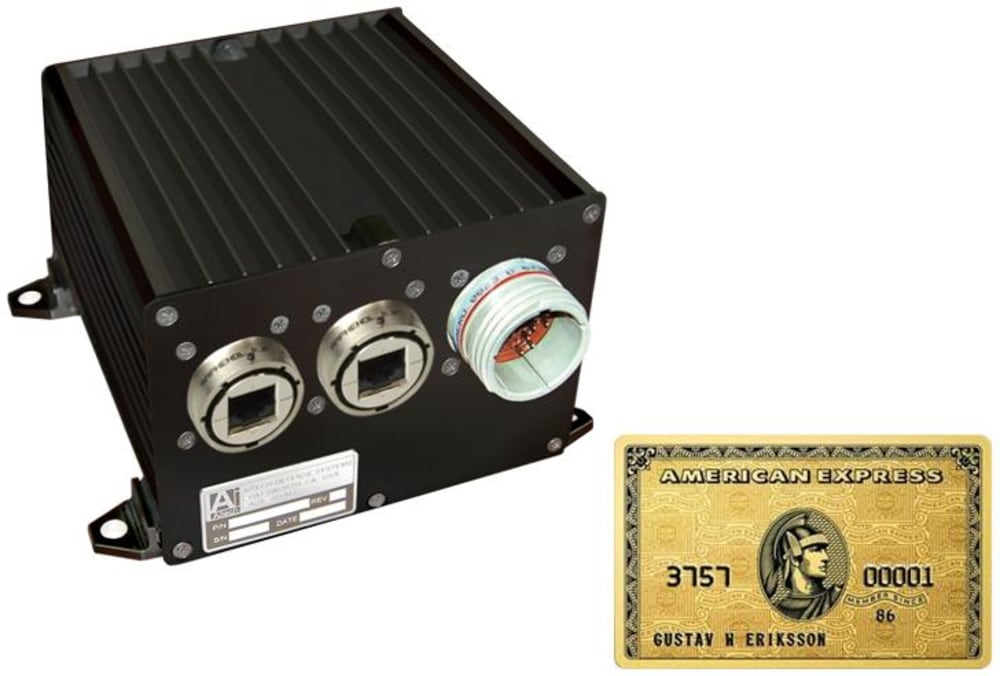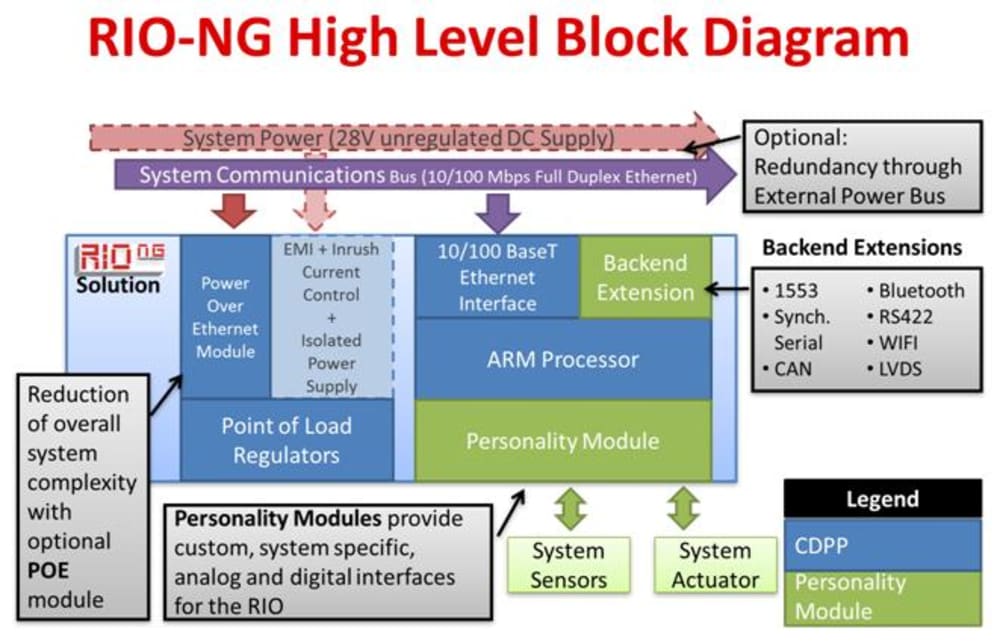The Aitech low power, Remote I/O Controller, Next Generation (RIO-NG) is Aitech’s latest invention in extensible low power, SWaP, Remote Input Output digital platforms. The RIO-NG platform is designed around a Common Digital Processing Platform (CDPP) based on the CORTEX M4 ARM processor which provides “standard” functionality to collect, process, format, packetize and transport data. The RIO-NG was designed with low power and high military reliability in mind. The CPU selected for this task is the ARM Cortex M4 running at 100 MHz. The RIO-NG platform is founded upon distributed processing and parallel task completion, both of which, coupled with active power management, allow the RIO-NG CPU to run at a significantly reduced clock rate, and provide significantly improved performance.
The ROI-NG interfaces to all systems through the use of I/O-specific personality modules. Personality modules are available in a variety of functions including but not limited to:
1. Process control: Thermocouple with Cold Junction Compensation, RTD, Strain Gauge, Accelerometer, Acoustic, and pressure transducers
2. Digital IO: Parallel Machine-Machine interfaces like TTL, RS422 discrete IO and Human Machine interfaces like push buttons and touch sensing panels
3. High Current Interface: Pyrotechnic high voltage/high current interface, Industrial and Aerospace voltage and current-mode valve control interfaces with modulation (power saving option)
4. Motor & Mechanism Drive: Brushed and brushless AC/DC Motor and Stepper motor controller, Permanent Magnet Synchronous Machine (PMSM) motor drive with vector and trapezoidal sensor and sensor-less commutation
In any given embedded subsystem, the processor’s two primary tasks can be summed up as: computation and data moving. In the embedded world, data moving is defined as data collection and transport. This the primary driver of embedded processing speed requirement: the faster the processor can move data, the more time the CPU has left over to compute before the next time critical event has to occur. Thus, the CPU can accomplish more tasks in a given time window. This IO performance has been part of the driver of the trend “faster CPU clocks yield better performance.” However, in an embedded world, high clock rate CPUs can yield orders of magnitude higher power, higher system cost, and overall lower reliability for two reasons:
1) High speed CPUs require more power, so fewer of them are used to meet a power budget, so the tendency is to try and utilize these CPUs to a higher load factor, and
2) Since the CPUs run hotter, and are doing more, i.e. one CPU responsible for the entire embedded system, when one CPU fails, a large portion of the system (if not all of it) suffers catastrophic results. The RIO-NG system architecture and ARM M4 processor are ideal to solve these systemic issues.
Dissipating typically less than 1 Watt per ROI-NG node, the RIO-NG is available in extended temperature, rugged/reliable military versions and the highest reliability levels needed for manned or unmanned space flight.
Like this entry?
-
About the Entrant
- Name:Douglas Patterson
- Type of entry:teamTeam members:Philippe Kassouf
Quinton Rodgers - Patent status:none





